Annapurna Circuit Trek
-
19 Days
Duration
-
5420m
Max Altitude
-
Strenuous
Trip Grade
-
2-14
Group Size
-
SEP to JAN & FEB to JUNE
Best Season
Trip Highlight
- Oppertunities to involve the respected mix Gurung and Magar lifestyles.
- Observe the lower land People’s culture and Customs.
- Surrounded by charming Mt.Annapurna views from Jomsom Upper Pisang.
- Impressive hike through the natural river sound of Marsyandi river.
- Observe the Gurung and Tibetan cultures.
- Glances of the picturesque mountains views from Manang...
- Lovely Mt.Annapuran and Tilico himal view from the Nawal.
- Eye-catching Annapurna II, III, Khansar,Lamjung mountains views..
- Amazing Mt. Dhaulagiri view from the Muktinath.
- Unforable hike with breath-taking mountains view in Thorong La pass.
- Vivid Gangapuran glacier near Manag.
- Involve the Holy temple of Hindu and buddhist manastries in Muktinath.
- Sightseeing in traditional village Kagbeni and Jhong village.
- Experiences the hike into the Kaligandaki river with views of Mountains.
- Accupy apple kingdom of Marpah and Tuckuche.
- Observe the Tibetan lifes styles in high up Manag and Kaligandki Valley.
Trip Overview
"It is not the mountains we conquer but ourselves.”
The Annapurna Circuit Trek is undoubtedly one of the most popular treks in Annapurna region with epic length, but still its rewarding journeys are worth enough for any trekker to carry on with their trek. The Annapurna tracks are continuously evolving, but the one constant is its status as one of the world’s greatest treks as it tends to take trekkers from green pastures to leafy pine forests to arid landscapes and lastly to the spectacular views of the Annapurna mountain range.
Our treks major highlights include the walk through the outstanding Throng-la pass at 5,416 meters bringing you closer to the Himalayas for the grand vistas of Annapurna I through IV, Dhaulagiri (8,167 m), Machapuchare (6,993 m), Gangapurna (7,455 m) and Nilgiri (2,637 m) dominating the northern skyline. You shall traverse through the contrasting landscapes and vegetations to discover the rich culture and unique lifestyle of the local inhabitants. Preferably done between the months of March to May and September to November, this trek is one of the most strenuous treks which require experience and good physical fitness. Join us & enjoy this adventurous uphill and downhill trek.
Overview Itinerary
Day 01: Arrival in Kathmandu (1,300m/4,264ft)
Day 02: Kathmandu: Sightseeing and trek Preparation
Day 03: Drive to Syange (800m/2,624ft): 7- 8 hours
Day 04:Syange to Dharapani (1,960m/6,430ft): 7-8 hours
Day 05: Dharapani to Chame (2,710m/8,891ft): 5 - 6 hours
Day 06: Chame to Pisang (3,300m/10824ft): 5 - 6 hours
Day 07: Pisang to Manang: 6 - 7 hours
Day 08: Manang: Acclimatization day
Day 09: Manang to Yak Kharka (4,110m/13,484ft): 3 - 4 hours
Day 10: Yak Kharka to Thorong Phedi (4,600m/15,092ft): 3 - 4 hours
Day 11: Thorong Phedi to Muktinath (3,800m/12,467ft) via Thorong La pass (5416m/17764ft): 7 - 8 hours
Day 12: Muktinath to Marpha (2,670m/8,760ft): 4 - 5 hours
Day 13: Marpha to Kalopani (2,530 m/8,300 ft): 5 - 6 hours
Day 14: Kalopani to Tatopani (1,200m/3,937ft): 6 - 7 hours
Day 15: Tatopani to Ghorepani (2,850m/9,350ft): 7 - 8 hours
Day 16: Ghorepani to Poon Hill to Birethanti (2,700m/8,860ft): 6 - 7 hours
Day 17: Birethanti to Pokhara (850m/2,789ft)
Day 18: Drive from Pokhara to Kathmandu: 5-6 hours
Day 19: Final departure
Day to Day Itinerary
One of our representatives will be waiting for your arrival at the exit point of the airport. He will greet you in a traditional Nepalese style with a fresh garland, warm Namaste, and, of course, a beautiful smile. Then, through the winding alleys of Kathmandu, he will accompany you to your hotel. Take a rest for the day or if you wished to stroll around then, the nearby food vendors are the best place to spend your time in. They offer wonderful delicacies.
Sightseeing in Kathmandu is one of the most engaging activities in Nepal. The time-honored prodigious mansions of Kathmandu have left no eye without wonder. Out of 7, UNESCO listed cultural heritage sites in Kathmandu, we will only be able to explore 4 sites because of the time limitations. But we may add up an extra day in your itinerary for sightseeing around the remaining sites as well.
Those 4 incredible sites are so beautiful that your jaw will fall. Also, they have their distinct surprises to astonish you: Pashupatinath complex shelters over 400 intricately designed shrines; Patan Durbar Square features amazing architectures and artistic designs; Swayambhunath Temple stands on top of the hill peering at the Kathmandu valley; Boudhanath temple dominates with its massive mandala and amazing architecture. They are simply excellent.
Early in the morning, we will leave Kathmandu towards syange via Besisahar. The road is winding and follows many hilly settlements until we make an appearance at the Besisahar. From there, Khudi is just a couple of kilometers away, but the road is very much rough. Once you arrive at Khudi, explore the local village and enjoy the views of lush hills all around.
Go past the Rainbow waterfall at Jagat and proceed towards the Chyamje village along the fair trails. Soon after Chyamje, the trail continues along the side of the valley, sometimes through the pleasant forest. The walk gets more interesting when you encounter another great waterfall within a radar of a couple of kilometers. The views of the mountains begin to show off as you progress through the exposed trails. Once you arrive at the village of Tal, the wild mountain vistas open up in their full grandeur. Without stopping by, continue to the Dharapani (translates to Tap Water).
Instead of catching the dirt road, you will follow the NATT (Natural Annapurna Trekking Trail) trails over the hills that demands you to cross a suspension bridge. Then, the trail crosses another river through the bridge to arrive at the plateau. Here, a line of Chortens and Mani walls shows you the path ahead to the Danakyu. From there, a steep ascent leads you towards the village of Temang. Through a beautiful village of Thanchowk, built on the ridge, proceed towards the classic settlement of Chame through the village of Koto. Chame offers some of the best views of the Himalayan ranges.
Join the upper trail from Chame to Talekhu that leads through a pleasant pine forest. Soon after the Talekhu, the trail continues through the pine forest where some beautiful waterfalls lead you towards the apple farmland of Bhratang. Here, a landowner has started a big apple farm by purchasing 60 apple plants from Italy. Beyond Bhratang, the trail is carved out of a vertical rock wall. As interesting as it sounds, the trails are very much dangerous. A few kilometers ahead, a bridge named Swargadwari arrives, which means the “Gateway to Heaven”. Crossing this bridge, you will confront a dense forest of pine. As you arrive at Dhukur Pokhari, proceed towards the Pisang, which is just a few distances ahead. Instead of stopping by at Lower Pisang, we will go to the Upper Pisang because the views are much better from this point.
From Upper Pisang, the path to the Manang passes through a pleasant pine forest that opens up into Ghyaru. Here, the views of the Annapurna II, IV, and III appear spectacular. Without spending much time here, you will continue towards the Ngawal that shows up the way to a wonderful viewpoint overlooking the views of the beautiful farm fields in Ghyaru and a big Stupa. Ngawal is adorned with several Chortens (little Buddhist Shrines) and Mani Walls that impels a Buddhist vibe. Down through the pleasant pine forest, walk to the Braka (Braga), a nice and pleasant village offering wonderful side trips. Then, the trail heads to the classic and cultural village of Manang.
Manang is indeed a very gratifying destination. Here, the prayer flags adorn the front yard of the houses and Chortens line up the streets. The houses are made up of stones to prevent the icy wind of the mountains from hitting the families. There are several monasteries to visit, but above all, the splendid panorama of the mountain peaks appears more appealing. Manang is simply earthly heaven for mountains and cultures lover. Plus, many side trips lead off from Manang. You may either hike to the Praken gompa, Gangapurna glacier, Bocho Gompa, or the Ice Lake. Hiking to some higher altitude regions also aids in acclimatization, so we will hike to one of these side trip destinations.
From Manang, continue the trail to the Yak Kharka through the quaint village of Gunsang. Cross a suspension bridge after Gunsang and continue your journey through a big Mani wall and an astounding Chortens. Within a short while, the views of the Gangapurna glacier and other icy ranges begin to show up making the trek more interesting to walk along. Then, through the high pastures, will arrive at the Yak Kharka. Don’t head up to the Churi Ledar unless you are fine with the altitude at Yak Kharka.
Leaving Yak Kharka (translates to the Yak pastures), the trail proceeds along the ascending track and crosses a suspension bridge across the river. Then, a wooden bridge drains the pathway to the slippery landslide area, which is indeed a dangerous pathway. Follow the signposts leading to the Thorong Phedi, but be careful of the falling stones. The final suspension bridge, leading to the Thorong Phedi, offers some of the spectacular views of the snowy peaks. For the day, rest in the Thorong Phedi.
Crossing the Thorong La Pass, the highest point of the Annapurna Circuit is probably the most demanding task of the overall trekking. Progressing too quickly can victimize you from the altitude-related complications. Therefore, walk slow and easy. The Mani walls are made even in the higher trekking zones and at Thorong La pass itself, you may see the stones wrapped by the prayer flags. These stones are kept to ward off the altitude spirits. Within a while, descend to the Muktinath Temple, to enjoy the incredible views of the 2 sacred lake, 108 stone taps, and classic architecture.
From Muktinath, head towards the Jomsom via one of the two routes: Kagbeni or Jharkot. Through Kagbeni, the trail mostly follows the dirt road. But on the other side, the path is pleasant and offers outstanding views of the landscapes and the mountains. When you arrive at the Jomsom, spare out some time to explore the marketplaces. They are worth strolling around. Then, descend towards the village of Marpha, which is just a couple of Kilometers below. From Marpha, see the views on the eastern side of the trail. They are worth watching.
The way to Kalopani is very much pleasant. The trail goes parallel to the Kaligandaki River, past a line of Chortens and Mani walls. People of this region are very much hospitable. From the settlements of Kalopani, you can still enjoy the panoramic glimpse of the snowy vistas. This place is indeed very much joyful.
From Kalopani, descend to the Tatopani via the pleasant trail that runs parallel to the Kaligandaki River. While the dirt road goes along the west side of the river, you will be walking along the NATT trails on the east side of the river, which offers more better views of the eastern ranges. The houses in this region are typical red mud houses. Before arriving at the Tatopani, you will have to join the dirt road, at least for a few minutes. Plunge into the hot spring at Tatopani.
From Tatopani, descend to the Ghorepani. As you move, the trail isn’t as interesting as it was before. When you reach Ghorepani, explore the local hamlets. The views of the northern Himalayan ranges appear fabulous from the Ghorepani. It is worth every penny.
Catch a side trip to Poonhill, early in the morning, to witness the glorious sunrise over the peaks of Annapurna I, II, III, IV, and countless other anonymous ranges. At Poon Hill, there is also a view tower to see the views, but they appear nothing different from what is seen from below the view tower. After spending some quality time at the Poonhill, descend to the Ghorepani for the lunch. Then, descend directly to the Birethanti via the amazing villages of the Ulleri and Tikhedhunga. When you reach Birethanti, explore the prosperous marketplaces and temples nearby.
Early in the morning, you will catch a drive to Pokhara from Birethanti. Upon reaching Pokhara, you will go for sightseeing around the natural sites such as the Davis waterfall, Phewa Lake, World Peace Stupa, etc. You may as well try out the adventure activities such as paragliding, Zip flying, etc.
From Pokhara, Kathmandu is just 200 km away. But it takes about over 6 hours to reach there because of the filthy road conditions and unpredictable traffic jams. By the time you arrive at Kathmandu, you may go for shopping around the souvenir stalls or sightseeing around the UNESCO listed cultural heritage sites of Kathmandu.
Finally, the day has come to say goodbye to all the friends and families in Nepal.
Includes:
- International and domestic airport transfers on private jeep or bus.
- 3 Night Accommodation in 3 stars hotel with breakfast in Kathmandu.
- Private jeep to trek starting and point and from trek ending to Kathmandu.
- Twin-sharing bed in guest house during the trek.
- English speaking, experienced trekking guide- Trained by Nepal government.
- Required trekking permits (Annapurna conservation area fee and TIMS card)
- Porters (2 clients get 1 porter) to carry clients backpack during the trek.
- Farwell dinner in Kathmandu before your departure.
- Duffle bag (only for trek) and free T-short for clients.
Excludes:
- Your international flight tickets fare.
- Nepal visa (you can apply Nepal visa at Tribhuvan international airport easily)
- Lunch and dinner in Kathmandu.
- Beverages such as cold drinks, alcohol drinks.
- Traver insurance to cover the risk and emergency evacuation.
- Your Personal trekking gear and equipment.
- Personal expenses which are not included in package.
- Tips for guide and porters.
FAQ's
Well experienced local guides and proper mountain porters and well management are main rules to make our customers satisfied. Experiences of the two decades in tourism sector managing their trekking plan and others activities properly to make their ’s dream to bring into the reality according to our customer’s interest, time and trekking areas. We focus on suitable, comfortable and safety plans for our valuable guests to experiences doing mainly trekking, climbing and any tours without ant obstacles. Our team always focus on to provides services to meet our guests ‘s targets, destination and aims in the remote areas of the Himalaya with open heart.
We are easy going local company to manage every single plan for our guests according to their interest. What we say is” GUEST IS GOD”. We value the guests first in our business. What we have is experienced staffs to manage every single thing easily in proper way. Well experienced field staff such as Guides and helpers/porters are the main back bone to stand among you to provides best services. “COME AS A GUEST GO AS A FRIEND”.
We spent more than two decades supporting to the local people in remote area of Nepal. We always provide proper local guides for the proper trekking area/routes. All guides are trained by Nepal government with some training of the First aids. All field staffs are selected sincerely to make sure you are in right in high mountains. Friendly Nepal team is coordinating to peoples who are scattering on the all over the world. I hope our two-decade working experiences in mountains and management in tourism sector may help you to explore the Nepal with confident with right people!!!
We can rent or hire, most of the trekking gear in Kathmandu/Nepal such as a four-season sleeping bag, Puffy down jackets, Micro pikes, trekking shoes, and others. we help you to hire or rent all required trekking gear before your trekking.
Hired trekking gears are must to keep safely if rented gears found damaged then you need to pay the same coast of the gear. You should keep certain amount of money to rent trekking gears. Normally, Trekking gears shop keep deposit $ 100 USD for a sleeping bag and a Puffy down jacket. Renting charge per day is approx. USD 1.50.
One of the re-presentative from Friendly Nepal treks come with private bus or car to pick you up from Tribhuvan airport and drop you in your guest house. With your details of the international flight and your full name, they will be standing in front of the arrival gate in Nepal airport.
Easily you can recognize the staff from Friendly Nepal treks with their T-Short and your name in holding bord. we always make you sure you are in right destination.
Tourists easily can apply their Nepali Visa upon the arrival in Tribhuvan Airport. It may take a few 30 minutes because same time a lot of tourists in the same process to obtain the Nepali Visa in Nepal Airport.
What you can do is please fill the all details to apply the Nepali Visa before landing the Tribhuvan Airport. It help you to obtain visa quicker than usual. You should bring passport photo copy and passport size Photo to apply the Nepali visa in the Nepal Airport.
Trekking in Himalayas are mostly remote. In modern days there are many choices of food menu in every guests houses in mountains and serve you proper ordered food. You can enjoy with continental breakfast with fresh fruit as well as lunch and dinner with verities of continental American, Nepali, and Indian foods with hot soups. Most of the food in high mountain supply by helicopter or local porter. Mostly in mountain you get Potatoes items, rice Items, Pasta, Pizza items, breads items and proper vegetables.
Dhal Bhat is the well- known food in Nepal that you get everywhere, Food in mountain cook properly by proper experienced cook. Local food is mostly organic and grown in same region. So, you can enjoy your trek with proper food in high Himalaya. We suggest you to have local food which are grown locally by local peoples.
You can leave your non-trekking gears in Kathmandu hotel safely. Every Hotel, they have proper safe store room to keep the non-trekking gears for the Hotel guests.
Hotel provides you TAG/receive to make sure that your non trekking gears or others backpack are stored in certain hotel. You get your stored belonging when you want. You no need to pay any money to store your luggage.
Flexibilities are the main prior for our guests. Just you send us your international flight tickets and passport copy with PP size photo to make all required trekking permit for your booked trek.
If you booked trek for the Everest, Upper Mustang, kanchenjanga, Dolpo region and other remote areas then you should deposit 15 percent ahead of time to manage flight, trekking permits.
1 porter carry 20-25 kg in high Himalaya in trekking. We have weight limit for Porters because they need to carry their backpack too, So, 20 kg per porter is quite limit weight excluding porter bag pack.
Every 2 guests get 1 porter. Porter are main backbone of the trekking. And good supporters.
Important is to be safe in mountain before getting something wrong. We always have well communication system with our staff from table to field staff.
So, if something went wrong with major altitude sickness or someone met major accident then our guide/team leader immediately find the way to rescue you from spot to the nearest Hospital. Guide always carry your travel insurance and it help you to get rescue and our guide/staff are train of the first Aid to keep our guest safe until Hospital.
Mid-winter treks are getting popular in Nepal. And numbers of tourists are increasing in mid-winter. The data of the report of every trekking areas shows that mid-winter trekkers are increasing in good way.
All are related with global warming, and high glaciers are melting unusually. So, number of tourists are trekking in Nepal in mid- winter. However, you need well preparation with right trekking gears to deal with minus temperature.
We value the safety of yours in mountain or anywhere in Nepal. So, highly suggested to bring travel insurance to cover mighty accident or if anything went wrong to anybody in unexpected ways in remote trekking route. Travel insurance help you to cover your expenditure if you need emergency rescue from mountain to nearest hospital or treatment in Nepal.
Equally travel insurance give you mentally secure and you will find life is safe with travel insurance.
You get warm and nice hot shower every day if you want. Every guest house they have hot shower service, mostly you get hot shower which runs by electricity or cooking gas.
Per shower, per person cost approx $5 USD. In some trekking region such as Dolpo, Manaslu, Kanchejanga and other remote area them don not have proper hot shower but provide hot buckets water for shower.
Safe drinking water is most important to make sure you are in good shape in mountain. We suggest you to get normal drinking water from water tap or gest house and use water purify tablets and wait 30 minute to drink.
Filtering the water from the river or water tap is the also best way to get safe drinking water in trekking but you should come with proper filtering water bottle.
Bottled- water also available to drink but we discourage to use bottled-water to keep environment clean.
We value your goal and always give first priority of what you want. So easily you can customize any trekking area according to you interest, time, we are quite flexible to customize your trekking as your request as can as possible.
Written plan in webpage may not work out for you sometime because of your interest and time or you want to extra days somewhere you like. This is most asked question for us and please feel free and we always customize or make any itinerary according to you interest, time.
Best months for the trekking are the September to Mid-January, which is known as Autumn season and mainly most of the trekkers love to trek during the Autumn because of the beautiful weather and clear days and less chance to get heavy snow in high mountain, Autumn coordinate best weather than others season.
During the Autumn season in high mountain weather would be sunny with plus temperature and some snow refreshment over 3000m. charming mountains are shine with stunning glacier with lush forest lower down.
Second best months are the February to mid-June, which is known as spring season. During the Spring season trekkers have opportunities to glance the colourful Rhododendron flowers in the elevation of the below 3000m and others alpine flowers blooms in late spring season. Weather would be little windy with some hailstones in hilly region and some snow refreshment in high mountain.
Number of solo women- trekkers are trekking in mountain and Nepal is the still safe country for the solo trekkers in mountain. Solo women always safe with Friendly Nepal.
Some exercises are important before the hitting the mountain, everyday running for 1 hour for few weeks, jugging, and Gym and stay active and proper food with high carb as well as jumping.
Hiking up and down every day makes your muscle strong and keep fit your body. Move around your body, push up and down, play food ball, volley ball and other game which gives you physical exercises.
Well mental preparation plays main roles to trek in Himalayas. Be positive with mountains, get enough information regarding the coming trek. And Planning well to get ready to climb up and down.
Depend on where you are going to trek, some wherein big town they may have ATM machine to draw the money but most of the trekking places in mountain there are not any ATM, So Credit cards is not worth using in mountain.
Make sure getting enough cash with some contingency budget for the trekking.
It cost you depend how much you spend. Approx $ 20-25 USD is quite enough for additional expenditures. You can buy water, chocolates, coffee and Biscuits and others fancy things.
Minus 10 sleeping bags require from September to November and minus 20 sleeping bags require from early December to mid- January). In case of the weather change in high mountain then you get extra banket in additional cost.
You can charge easily your batteries, cell phone, camera in trekking/mountains. When you entre the mountain region the mostly , every guest house have sollar systems to charge you electric equipment, make sure charging your batteries before the sun go down. At least you get chance to charge your batteries, and other electric equipment.
Note: if weather get change in bad way then no any charging in high mountains because of the no sun.
Definitely you get enough boiled or hot water in trekking in the additional cost.In Annapurna, Langtang and Manaslu and mustang, hot water is little cheaper than in Everest , Makalu, Kanchenjang.
It cost you $2 -5 USD per litter for the boil water in trekking.
You should bring passport size photos -4 pieces.
Passport photo copy – 1 Piece.
Your Travel insurance’s Photo copy -1 piece.
Sure, you can extend the trekking days during the trek, just coordinate with guide and company few days ago you decided.
Some people may like to stay somewhere in nice places more days more than written plan or spend more time in KTM or Pokhara or somewhere.
Depend where you are trekking, there are internet services in mountain, If you are trekking in Everest, Annapurna, Langtang, Manaslu and Upper mustang then easily you get internate services in every guesthouses in additional cost.
If you are trekking in far remote areas such as Kanchejanga, Upper Dolpo and Narphu Valleys then internet services are limits.
Risk and Liabilities
- Jomsong to Pokhara flight may delay in case of the weather change, So,2 days extra would help.
- Avoid the Altitude sickess hiking slow, wearing warm cloths, drinking eaough water.
- Make sure having Personal medication for in case of any issue of health.
- Easily any hiker may get altitude sickness from wrong eating, poor gears.
- Hikers may get easily dehydred so drink enough treated water, 3-4 LTRs per
- Always let the guide know in case of feeling sick or any thing wrong in mountains.
- If you loss your belonging by negligences, that might be your responsibilities.
- Always come with travel insurance which is must important in remore/mountain.
- Pay attention whilst you are trekking in the gedge of the river, glaciers, high passes.
- Use trekking pole in the edge of the hill and rivers sides.
- Make sure having proper trekking gear before the trek.
- Always keep your valuable dacuments with you.
- High mountain is always risk of altitude, go slow with adequite water.
- Do not throw rubbish anywhere. put in proper zone please.
Nwulu
United Kingdom Santa Ghale - Great experienced trekking Guide in Nepal.
Santa- Great experienced Guide in Nepal. November 2018 I'd like to tell you about my guide Santa Ghale. He is a first rate guide and very affordable. He has been guiding in the Nepal Himalaya his entire adult life. He is very knowledgeable, a real "people person" and can tailor a trip to your personal need and desires. I very highly recommend him. Life is short - Take the time! Nwulu - United Kimdom
James Family - Awesome guide- Santa
AustraliaCan't wait to go back! You are the best guide - Santa.
If you are thinking of getting a guide, you have to get Santa. We ate really great food, never felt like foreigners and never got injured along the way. He can tell you anything and everything you want to know about culture and mountains, and will always make sure you're prepared and ready to continue after rest. Santa if you read this, thank you so much! Hopefully see you soon!! October 2017
Peter and Koy
United StatesGood managment with exprienced team!
Oct 2018 In September and October of 2012 I went to Nepal to do some serious hiking. Through some forums I got the contact details of Santa. Right from the start he was really friendly and helpful. Together we came up with a rough plan of what was possible during my stay in Nepal. I wanted to do the 3 high passes trek, the Manaslu trek and a bit of the Annapurna trek. We managed to do all three of them without any problems. There were some issues with the permits but those were easily resolved with his help. He is a knowledgeable guide, really friendly and helpful and also great company. Would definitely recommend!
Ben J
AustraliaFriendly Friendly people!!!
Brenden J Sydney, Australia. Santa is very professional and accomodating Sep 2019 • Friends I travelled in Nepal with a friend in 2014. We booked Santa as our guide for both the Everest Base Camp (3 high passes) trek and the Annapurna Base Camp Circuit. Santa met us at our hotel a few days before to make sure all our national park passes and permits were sorted. Santa took care of all the logistics during the treks and constantly ensured our safety and enjoyment throughout the entire trip. All we had to worry about was getting from point A to B while taking in the beautiful scenery. Santa was very accomodating when our plans had to change last minute and for that I am extremely grateful. I cannot recommend Santa enough. He is a kind hearted individual and will do all he can to ensure you enjoy your treks in Nepal.
Dan L
AustraliaGreat guide .Awesome experiences!
Great Guide Nov 2018 • Solo I'd like to tell you about my guide Santa Ghale. He is a first rate guide and very affordable. He has been guiding in the Nepal Himalaya his entire adult life. He is very knowledgeable, a real "people person" and can tailor a trip to your personal need and desires. I very highly recommend him. Life is short - Take the trip!
Leigh E
United KingdomAmazing Nepal, A great guide
London Amazing Nepal, A great guide 2022 April I went to Nepal as a black, female, solo traveller in April 222 and Santa was my guide for the Annapurna circuit. I contacted some of the frequent posters on these boards and others and Santa’s name came up a few times. Still, it felt like a leap of faith to book a 3 week trip with someone I’d never met before! I needn’t have worried, I had an amazing time (Nepal really is beautiful) and Santa is so experienced I felt that I was in very safe hands. I found him to be kind, patient and good company without being intrusively so. I met plenty of travellers who had decide to do the Annapurna Circuit without a guide. I was glad for Santa’s expertise and thought that that this was well worth the expense.
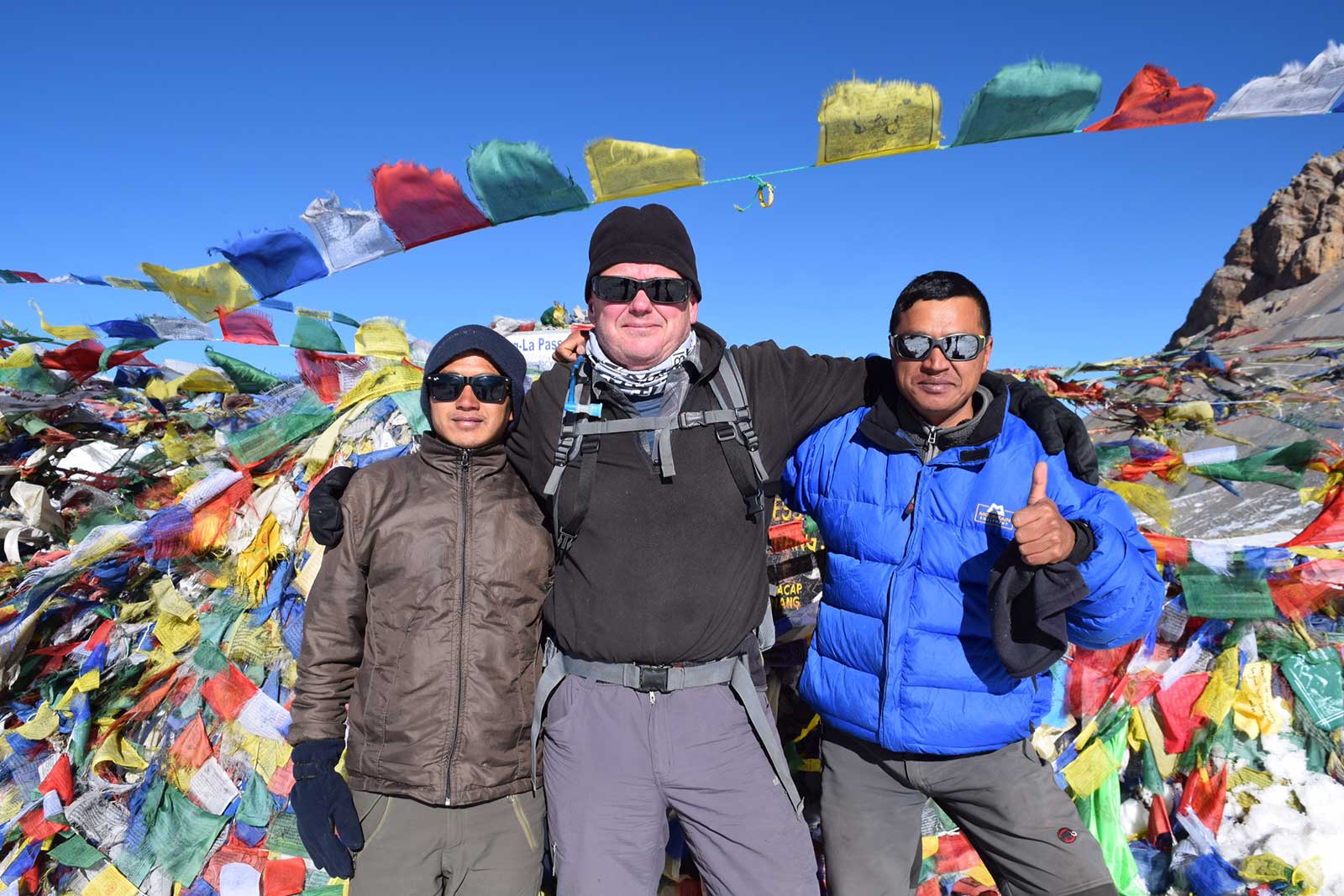
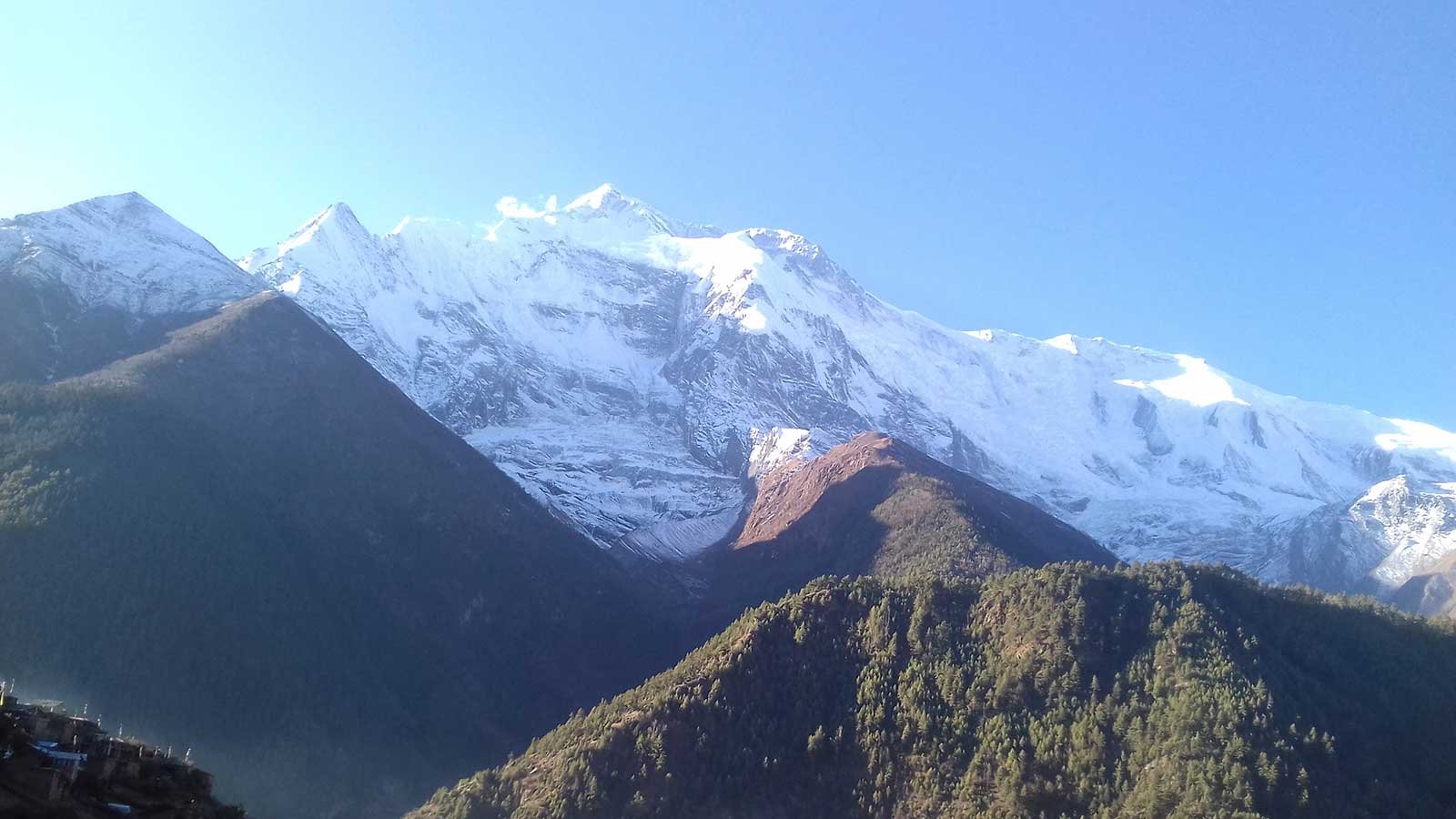
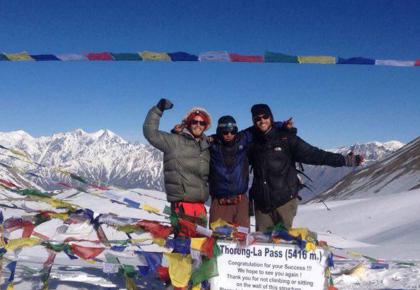
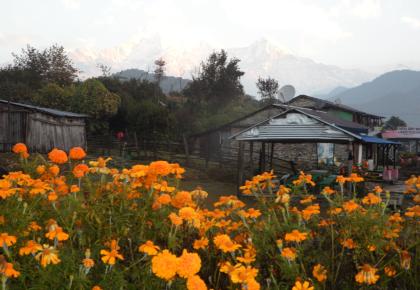
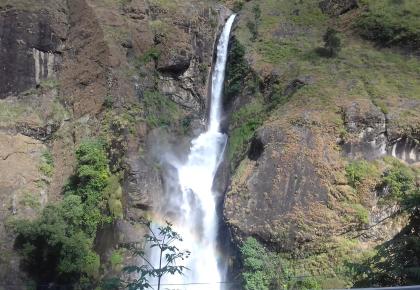
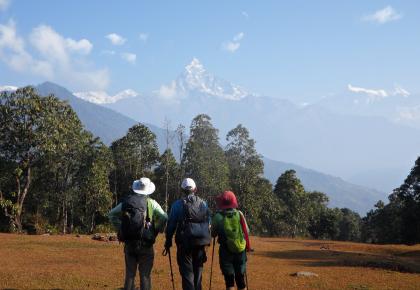
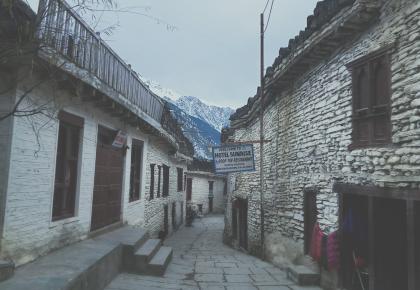
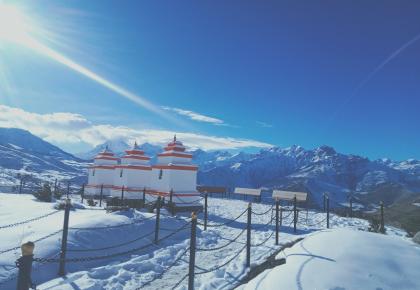
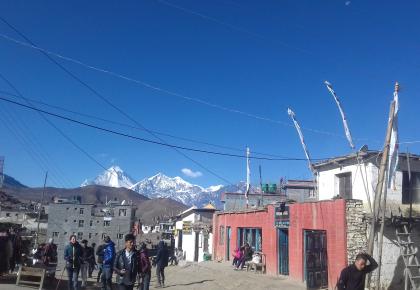
-min-420x290.jpg)